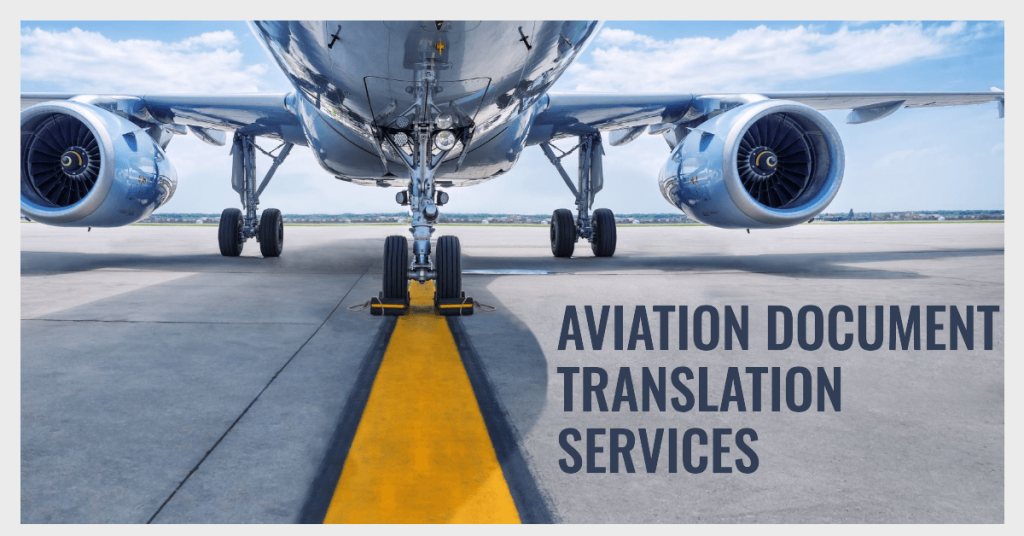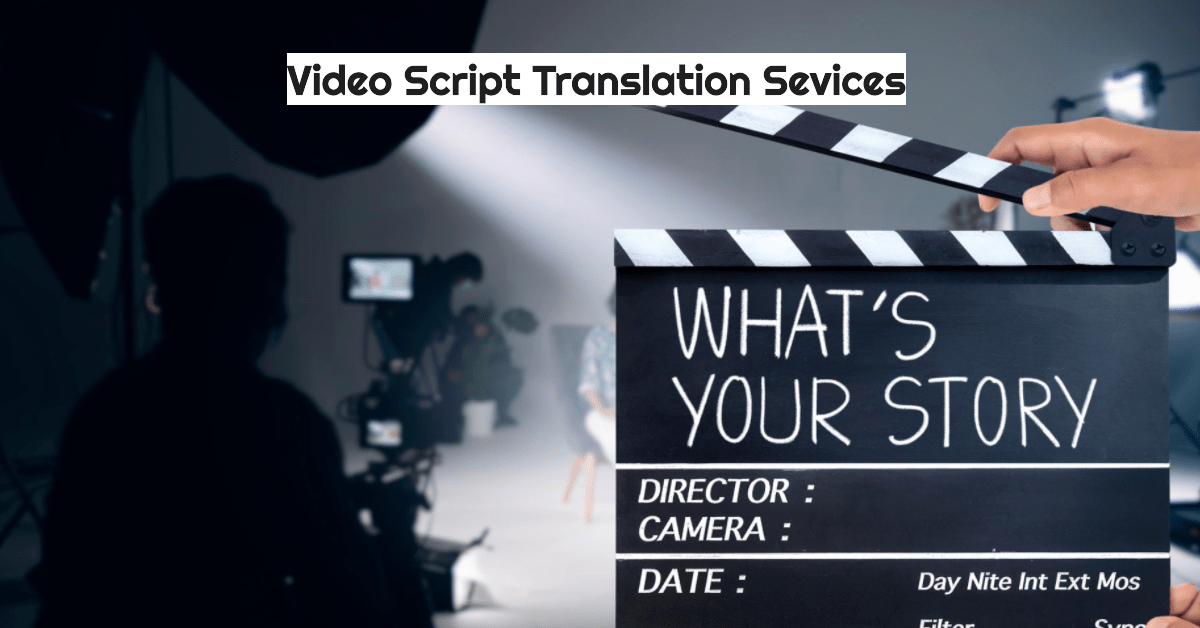Aviation Document Translation Services in Singapore
In the intricate world of aviation, where precision and safety are paramount, accurate and reliable communication is indispensable.
The aviation industry operates on a global scale, with diverse stakeholders from pilots and air traffic controllers to engineers and regulatory bodies. To ensure seamless operations and prevent accidents, effective communication across language barriers is essential. This is where aviation document translation services play a vital role.
Aviation documents, ranging from technical manuals and safety protocols to regulatory compliance documents and training materials, require precise and accurate translations to guarantee the safety and efficiency of operations.
A single mistranslation can have far-reaching consequences, from operational errors to regulatory non-compliance. Therefore, it is imperative to choose a professional translation provider that specialises in aviation documents and understands the nuances of this highly specialized industry.
This article will delve into the importance of aviation document translation services, the types of documents that require translation, the challenges involved in this process, and the best practices for reliable translations.
We will also explore the benefits of working with a reputable translation solutions company like WhizWordz, which offers specialised expertise in aviation document translation.
Understanding Aviation Document Translation
Imagine you’re a pilot soaring through the clouds, relying on your aircraft’s manual for guidance. What if that manual were filled with mistranslations or unclear instructions? The consequences could be catastrophic. This is why aviation sector document translation is so crucial. It’s not just about converting words from one language to another; it’s about ensuring safety, compliance, and effective communication in a high-stakes industry.
Aviation documents encompass a wide range of materials, from technical specifications and manuals outlining maintenance procedures to safety protocols ensuring passenger well-being. These documents are essential for the smooth operation of aircraft, airports, and the entire aerospace ecosystem. When translated incorrectly, they can lead to misunderstandings, errors, and even accidents.
High-quality translations in aviation are not just about ensuring compliance with regulations. They also play a vital role in fostering effective communication between pilots, air traffic controllers, engineers, and other stakeholders involved in the aviation industry. Clear and concise translations help to prevent misunderstandings, improve efficiency, and enhance safety.
In essence, aviation document translation is more than just a linguistic exercise. It’s a critical component of ensuring the safety, efficiency, and reliability of the aviation industry.
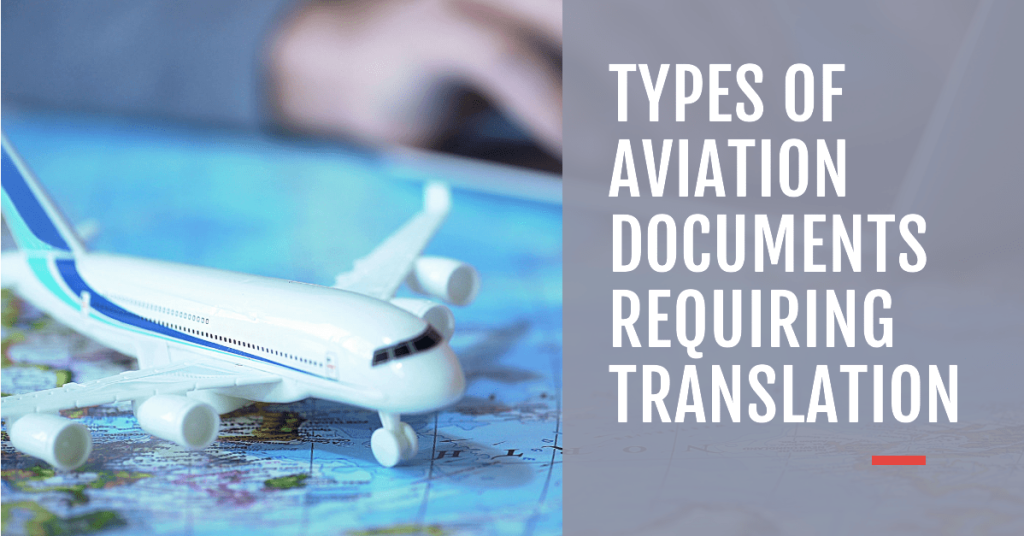
Types of Aviation Documents Requiring Translation
Aviation documents come in various forms, each serving a specific purpose. Let’s explore some of the key types that often require translation:
Technical Manuals
Think of technical manuals as the bible for aircraft engineering maintenance and operation. They contain detailed instructions, diagrams, electronic systems and specifications that guide mechanics, engineers, civil aviation personnel and pilots. Expert aviation translation services of these manuals are crucial for ensuring safe and efficient aircraft manufacturing and maintenance.
Safety Manuals
Safety manuals are like the rulebook for the aviation industry. They outline procedures for emergency situations, passenger safety, and other critical aspects of flight operations. A mis-translated safety manual could have dire consequences, so accuracy is paramount.
Regulatory Compliance Documents
Aviation is a heavily regulated industry, with numerous international and national regulations to adhere to. Translation of regulatory compliance documents ensures that airlines, airports, and other aviation entities are compliant with local and international laws.
Flight Operations Manuals
These manuals are the pilots’ guide to operating specific aircraft. They contain information on performance characteristics, flight procedures and navigation, and emergency handling. Accurate translations are essential for ensuring safe and efficient flight operations.
Training Materials
Training documents, such as pilot user manuals, cabin crew manuals, product manuals, flight safety manuals and ground staff training materials, are crucial for ensuring that personnel are adequately prepared to perform their duties. Accurate translations of these quality technical documents and software materials help to maintain consistent standards across different languages and cultures.
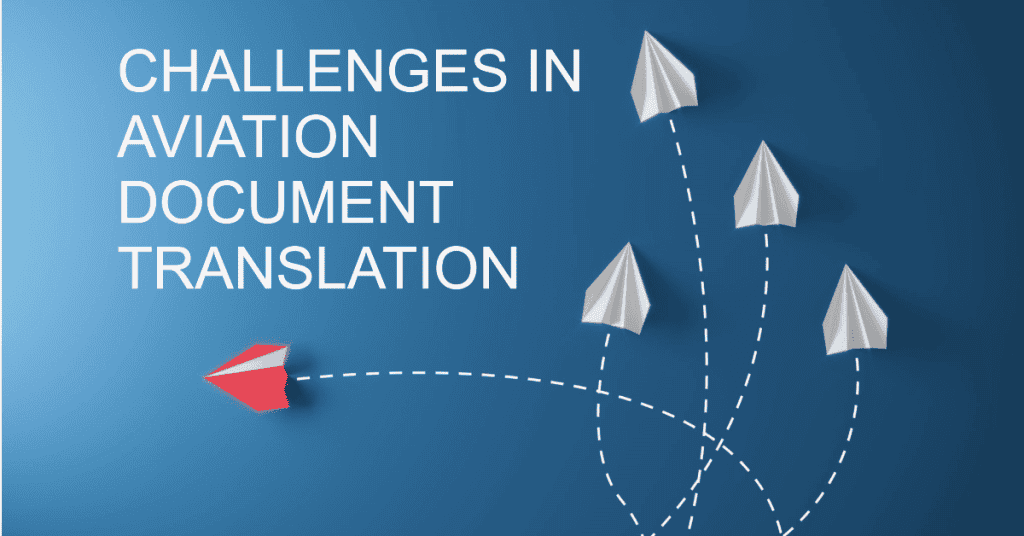
Challenges in Aviation Document Translation
Translating avionics documents is not as straightforward as running a text through a translation app. It presents unique challenges that require specialized knowledge and expertise.
Technical Terminology
Aviation is a field filled with jargon, acronyms, and technical terms that can be difficult to translate accurately. For example, terms like “flaps,” “rudder,” and “yaw” may have specific meanings in the aviation industry that are not easily translatable to other languages. Translators must have a deep understanding of these terms and their nuances to ensure that the meaning is conveyed correctly for the international markets and international customers.
Cultural Nuances
Aviation is a global industry, and cultural differences can play a significant role in communication. For example, certain phrases or idioms may have different connotations in different cultures, leading to misunderstandings if not translated appropriately. Translators must be aware of cultural nuances and avoid using expressions that could be offensive or confusing to the target audience of global markets.
Maintaining Consistency Across Languages
When translating a series of international aviation documents, it’s essential to maintain consistency in terminology and style across all languages. Using different terms for the same concept or varying the style of writing can create confusion and hinder understanding. Consistency ensures that the translated documents are cohesive and easy to follow.
Regulatory Variations
Aviation regulations can vary significantly from country to country. For example, regulations related to flight crew qualifications, maintenance procedures, and safety standards may differ between countries. Translators must be familiar with the specific regulations and standards applicable to the target country to ensure that the translated documents comply with local regulations and laws.
Time Constraints
The aviation industry is fast-paced, and there is often a need for quick turnaround times for translations. Translators must be able to work efficiently and accurately under tight deadlines without compromising the quality of the translation.
Specialized Software and Tools
To effectively handle aviation translation projects, translators may need to use specialized software and tools. These tools can help with terminology management, translation memory, and quality assurance.
Subject Matter Expertise
In addition to language skills, multilingual linguists should also have a basic understanding of aviation concepts and terminology. This will help them to better understand the context of the documents and ensure that the language translations are accurate and meaningful.
By overcoming these challenges, professional translators can play a vital role in ensuring the safety, efficiency, and compliance of the aviation industry.
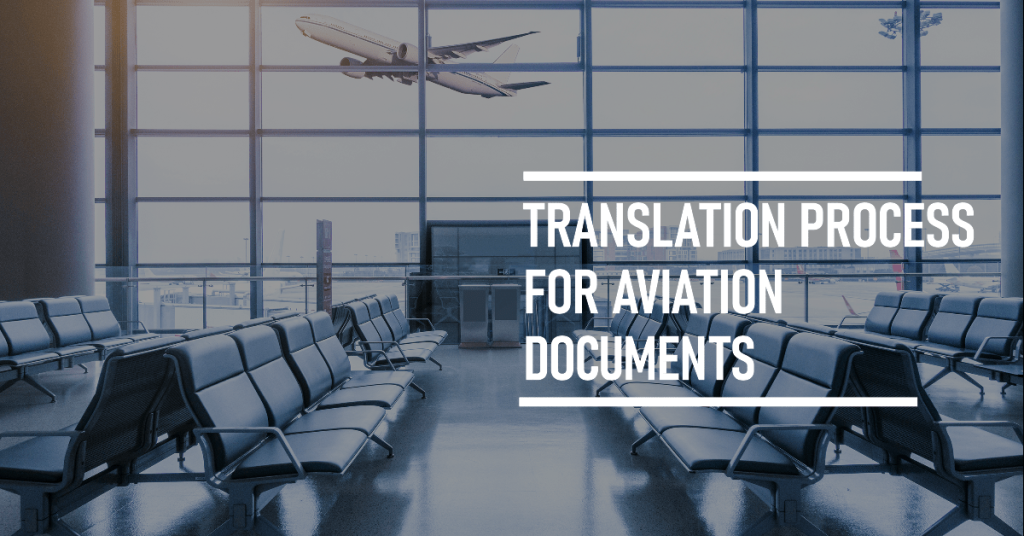
Translation Process for Aviation Documents
The translation process for aviation documents involves several key steps to ensure accuracy, quality, and efficiency.
Initial Assessment
The first step in the translation process is to conduct a thorough assessment of the documents to be translated. This includes:
- Identifying the document type: Determining whether the document is a technical manual, safety manual, regulatory compliance document, flight operations manual, or training material.
- Assessing the complexity: Evaluating the complexity of the document, including the technical terminology, cultural nuances, and length.
- Determining the target language: Identifying the language or languages into which the document needs to be translated.
- Setting deadlines: Establishing realistic deadlines for the translation project.
Selecting Qualified Translators
Once the initial assessment is complete, the translation agency will select qualified translators with expertise in aviation and the target language. These translators should have a deep understanding of the technical terminology, cultural nuances, and regulatory requirements associated with aviation.
Translation Phase
The translation phase involves the actual translation of the document. Translators will use their knowledge of aviation and the target language to accurately convey the meaning of the original text. They will also pay close attention to terminology consistency, cultural nuances, and regulatory requirements.
Review and Quality Assurance
After the initial translation is complete, it will undergo a rigorous review and quality assurance process. This typically involves:
- Proofreading: Checking for errors in grammar, spelling, and punctuation.
- Editing: Ensuring that the translation is clear, concise, and accurate.
- Term consistency: Verifying that the same terms are used consistently throughout the document.
- Cultural sensitivity: Ensuring that the translation is culturally appropriate for the target audience.
- Regulatory compliance: Checking that the translation complies with relevant regulations and standards.
Final Delivery and Feedback Loop
Once the review and quality assurance process is complete, the final translated document will be delivered to the client. The client can then review the translation and provide feedback. If necessary, the translation agency can make revisions to ensure that the final product meets the client’s satisfaction.
By following this process, translation agencies can ensure that aviation documents are translated accurately, efficiently, and in compliance with industry standards.
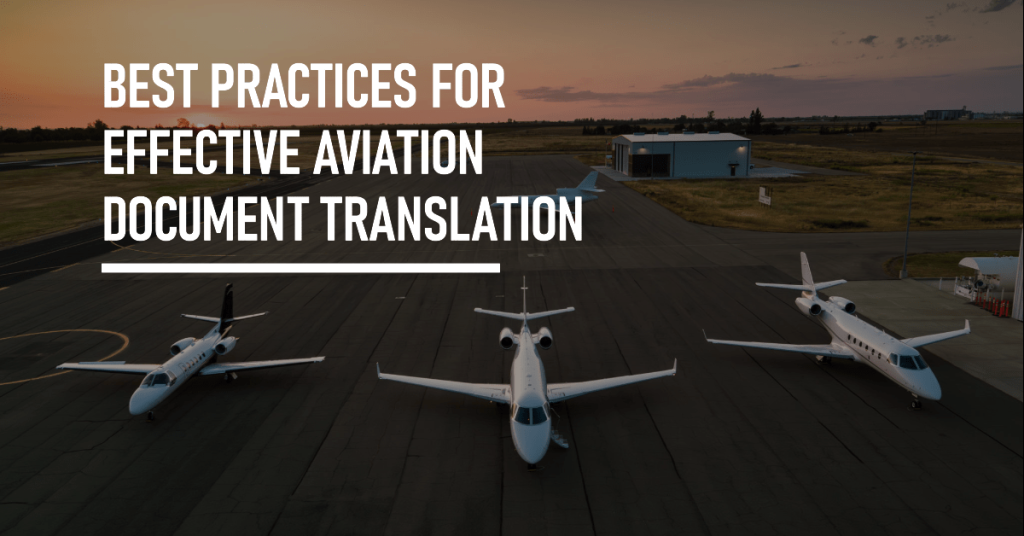
Best Practices for Effective Aviation Document Translation
To ensure the highest quality translations for your aviation documents, consider the following best practices:
Engaging Professional Services
- Specialized Expertise: Look for a translation agency that specializes in aviation documents. They will have the necessary knowledge and experience to handle the technical terminology and cultural nuances specific to this industry.
- Quality Assurance: Choose an agency with a proven track record in delivering accurate and reliable translations. They should have quality control processes in place to ensure the highest standards.
- Industry Certifications: Look for agencies that are certified by relevant industry organizations, such as the Association of Translation Companies (ATC).
Providing Comprehensive Context
- Background Information: Provide the translation agency with as much background information as possible about the documents to be translated. This includes the purpose, target audience, and any specific requirements or guidelines.
- Terminology Glossaries: If you have a glossary of technical terms, provide it to the translation agency to ensure consistency and high-quality translation services.
Utilising Technology Wisely
- Translation Management Systems (TMS): Leverage TMS software to streamline the translation process, manage terminology, and ensure consistency across multiple documents.
- Machine Translation with Human Post-Editing: Consider using machine translation as a starting point, followed by human post-editing to ensure accuracy and quality.
Ensuring Confidentiality and Security
- Non-Disclosure Agreements: Have the translation agency sign a non-disclosure agreement (NDA) to protect sensitive information.
- Data Security Measures: Ensure that the agency has robust data security measures in place to prevent unauthorised access or data breaches.
By following these best aviation translation practices, you can ensure that your aviation documents are translated accurately, efficiently, and with the utmost confidentiality.
Benefits of Hiring WhizWordz Translation Company for Aviation Document Translation
When it comes to accurate aviation translations, choosing the right partner is crucial. WhizWordz offers a range of benefits that make us the ideal choice for your translation needs and aviation success.
Expertise in Aviation Terminology: Our team of aviation translators includes subject matter experts in global aviation terminology, ensuring that your documents are translated accurately and consistently. We understand the nuances of the industry and can effectively convey technical information across languages and deliver the best translation results to our aviation companies.
Quality Assurance Processes: We have rigorous quality assurance processes and technical documentation in place to guarantee the accuracy and reliability of our multiple languages translation. Our team of expert aviation editors and proofreaders carefully review each document to identify and correct any errors or inconsistencies.
Timely Delivery: We understand the importance of meeting deadlines in the fast-paced aviation industry. Our team is committed to delivering your translations on time without compromising quality. We use efficient workflows and leverage technology to ensure timely delivery.
Comprehensive Services: WhizWordz offers a wide range of language services tailored to the aviation industry. We can handle technical manuals, safety manuals, regulatory compliance documents, flight operations manuals, aviation equipment manual and training materials.
Customer-Centric Approach: We prioritize customer satisfaction and maintain open communication throughout the translation process. Our team is dedicated to understanding your specific needs and providing personalized service.
By choosing leading aerospace translation services company such as WhizWordz, you can be confident that your aviation documents will be translated accurately, efficiently, and with the highest level of professionalism.
Get a free quote for your aviation document today and our language support team will get in touch with you soon.
Frequently Asked Questions (FAQs)
Q1: What types of aviation documents can be translated?
A: WhizWordz can handle a wide range of aviation documents, including:
- Technical manuals
- Safety manuals
- Regulatory compliance documents
- Flight operations manuals
- Training materials
We have the expertise to accurately translate these documents, ensuring that they are clear, concise, and compliant with industry standards.
Q2: Why is accurate translation important in the aviation industry?
A: Accurate translation in the aviation industry is crucial for ensuring safety, compliance, and effective communication. A single mistranslation can have serious consequences, such as operational errors, accidents, or regulatory violations.
Q3: What are the challenges involved in translating aviation documents?
A: Translating aviation documents presents unique challenges due to:
- Technical terminology: Aviation is filled with specialized language that can be difficult to translate accurately.
- Cultural nuances: Understanding cultural differences is essential for avoiding misunderstandings and ensuring appropriate translations.
- Regulatory variations: Regulations can vary significantly between countries, requiring translators to be familiar with local standards.
Q4: How does WhizWordz ensure the accuracy of aviation document translations?
A: WhizWordz provides professional aviation translation services and employs a rigorous quality assurance process to ensure the accuracy of our translations. This includes:
- Using qualified translators who are multilingual subject matter experts in aviation terminology.
- Conducting thorough proofreading and editing.
- Utilizing translation memory tools to maintain consistency.
- Following industry best practices and standards.
Q5: How long does it typically take to translate an aviation document?
A: The turnaround time for aviation document translation provides for each project depends on the length, complexity, and language pair. We provide estimates based on your specific project requirements. However, we strive to deliver translations as quickly as possible without compromising quality.
Q6: What is the cost of aviation document translation services?
A: Our pricing is competitive and based on factors such as the length of the document, the language pair, and the level of complexity. We provide customised quotes for each project.
Q7: How can I ensure confidentiality when working with a translation agency for aviation documents?
A: WhizWordz a leading translation company in Singapore and we take data privacy and confidentiality seriously. We have strict security measures and information management in place to protect your sensitive information. We also sign non-disclosure agreements (NDAs) to ensure the confidentiality of your documents.
By choosing WhizWordz for your aviation document translation needs, you can be confident in the accuracy, quality, and confidentiality of our linguistic services.
